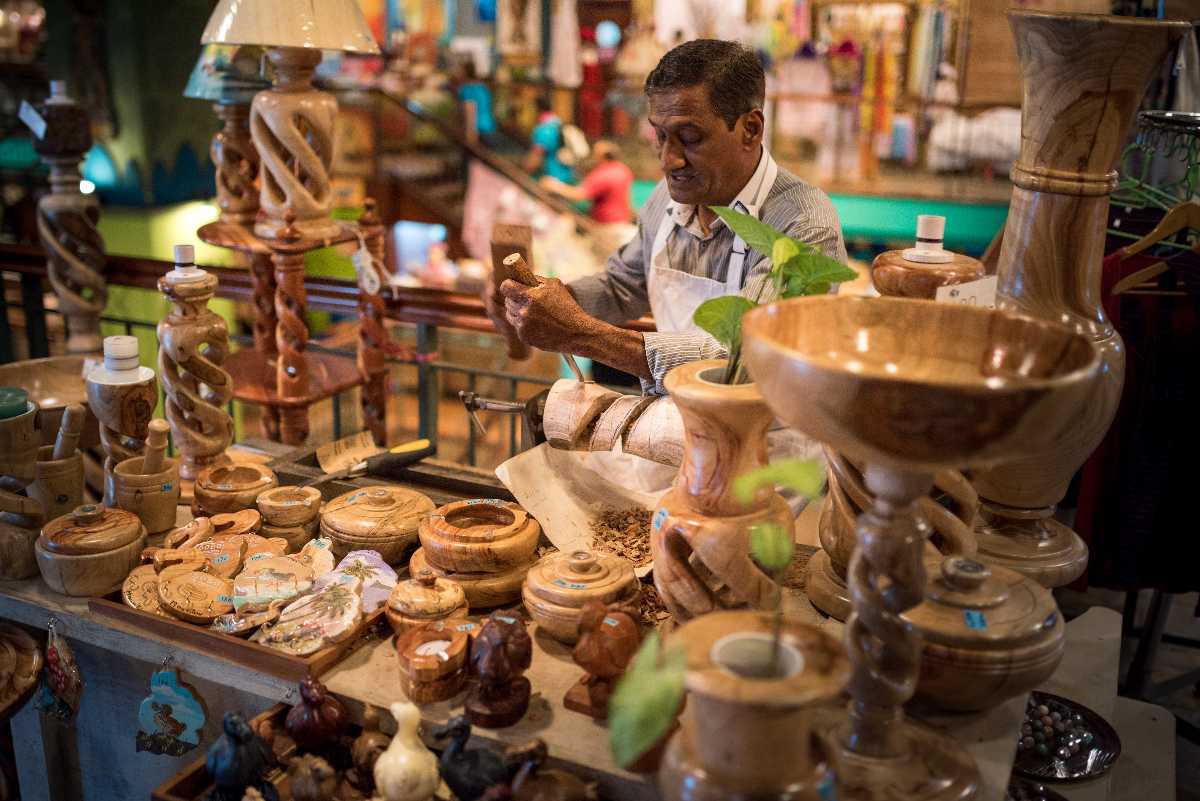Curepipe Curepipe is by far one of the most densely populated areas within Central Mauritius, and...
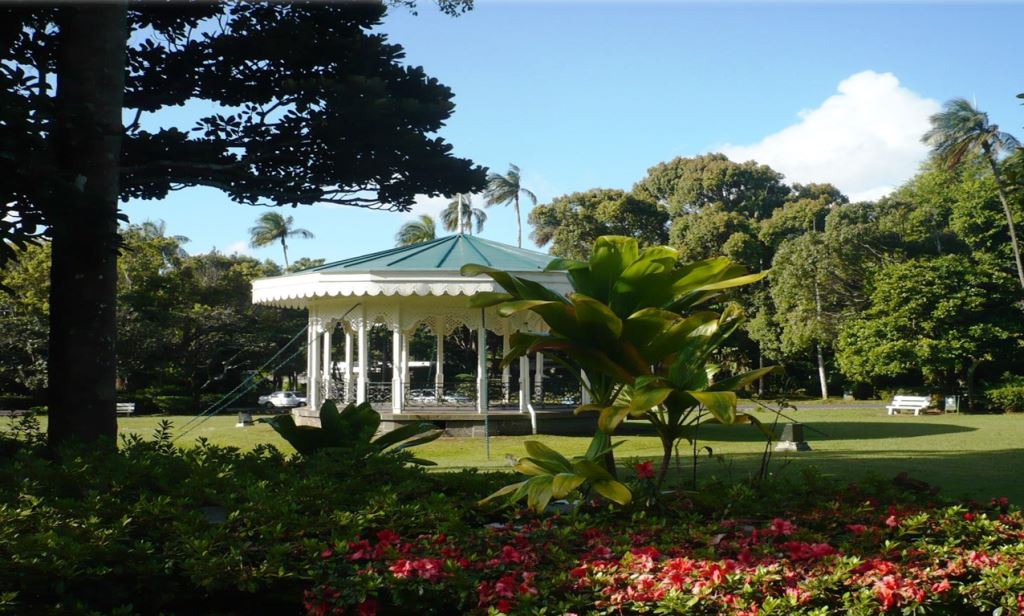

Curepipe Curepipe is by far one of the most densely populated areas within Central Mauritius, and...
Features information that is relevant to travellers who are thinking about and actively planning a visit to Mauritus.
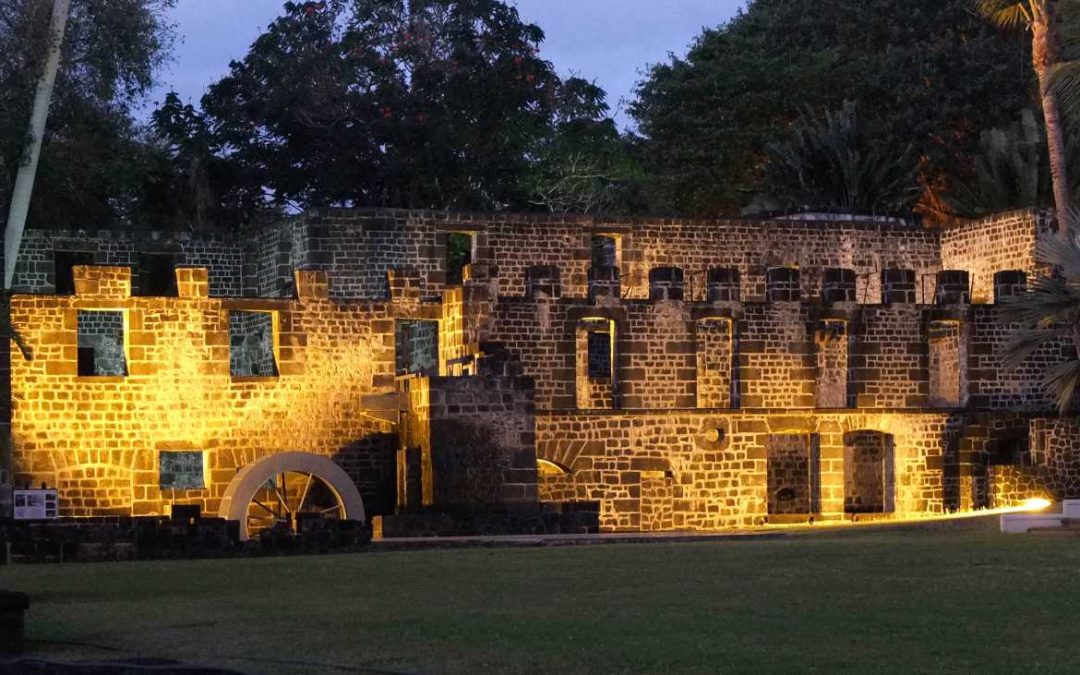
Prior to the 18th century, Turtle Bay was a popular stop for ships on their voyage from Europe to the riches of the East. It was then called ‘Ebony Bay’ by the Dutch because ebony forests were plentiful in the area and ebony wood is ideal for ship repairs. By the 17th century the ebony forest was mostly depleted but there were many turtles frolicking in the bay. So the Dutch changed the bay’s name to ‘Turtle Bay’.
The English also anchored their ships at Balaclava to stock up with food and other necessities for their long sea voyage.
By the 18th century, the French had settled in Mauritius. The first governor by the name of Mahe de Labourdonnais moved the administration from Mahebourg in the South to the North. The new capital was named Port Louis in honour of King Louis XV. A new capital and a harbour were built by the French. Balaclava was used to make weapons and gunpowder during Mahe de Labourdonnais’ campaigns in India. Some 400 slaves worked gunpowder factory during this period. The bay was thereafter nicknamed ‘La Baie de l’Arsenal’ and the small village that lies on the road from Port Louis to Grand Bay was called ‘Arsenal’. An iron foundry, a naval arsenal and a gunpowder factory completed the ‘fort’.
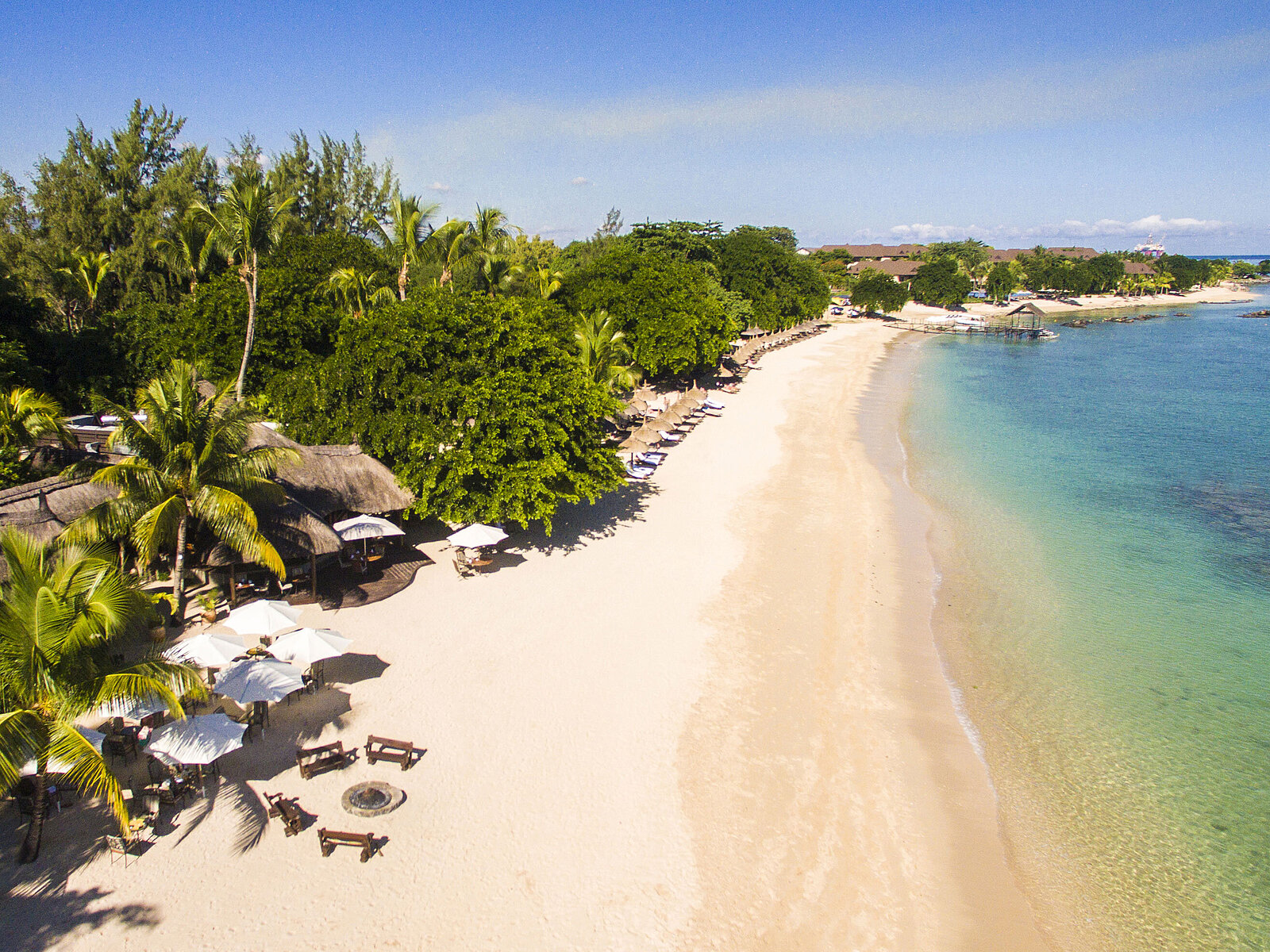
The 5-star Maritim Resort & Spa Mauritius is located within Ruins of Balaclava estate along with the Citron river and its waterfalls and estuary. A wide array of activities such as fishing in the river, outdoor games and playground, animal farm, giant tortoises park, archery sessions and more are available.
The ‘open-air museum’ is located on the grounds of the Maritim Hotel in a 35 hectare estate on the South west coast. It’s only a 10 minute drive from popular Grand Bay. The entrance to this historical site is free for visitors. You must phone the Maritim Resort for permission to visit the ruins. Tell them you are a tourist. That’s because the site is sometimes used for fashion and film shoots when the producers pay a fee.

In the museum there is an old flour mill which was used to produce flour to make many food products. The wheat was imported from Australia.
The original sea walls built around the fortress are still visible and the ruins are conveniently located in the vicinity of the Maritim Hotel. Chateau Mon Desir is a restaurant built on the spot of the original Mon Desir home from where the Turtle Bay and the ruins are visible. Chateau Mon Desir is now gastronomic ‘à la carte’ restaurant in a colonial-style mansion house overlooking the 18th century Ruins of Balaclava and the Citron river.
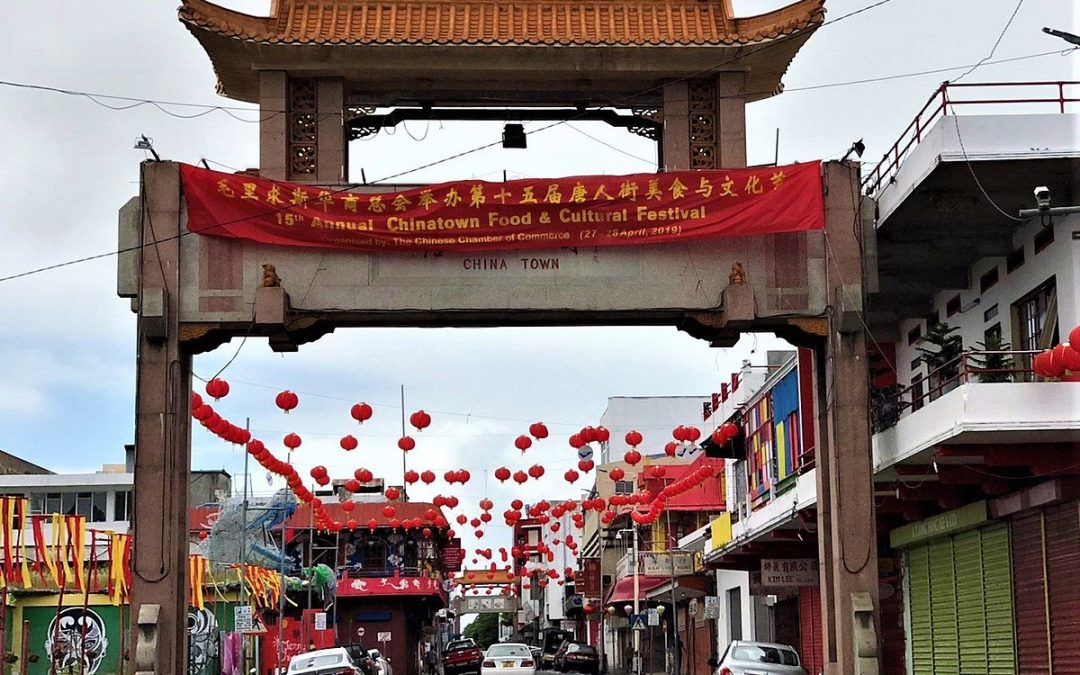
Chinatown in Mauritius is in the heart of the capital Port Louis. It is one of the oldest Chinese settlement in Africa which dates as far back as the 1780s. Today, Chinese Mauritians are moving out of the area to seek their fortunes abroad.
There are colorfully painted, white, red and blue wooden shop fronts which date as far back as the mid 1800s. Ground spices, aromatic vegetables and restaurants serving up Asian cuisines invite visitors to Chinatown.

Mandarin is still actively taught in middle schools in the area, and the streets are marked with well-maintained pagodas.
Although Chinese make up less than 3% of the island’s population, their presence is noticeable throughout the island. Chinatown is a gathering spot for cultural customs such as celebrating the mid-autumn festival also known as the mooncake festival. The festival offers a chance for both young and old to participate in centuries-old traditions and draws tourists. During the Chinese new year period there will be colourful lion dances in the city.
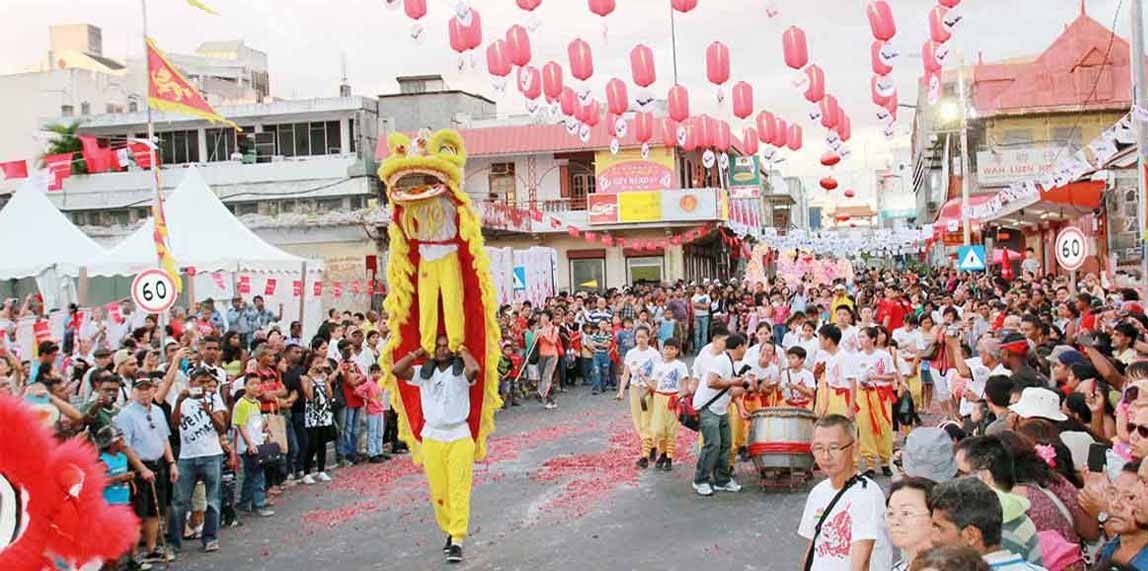
Chinatown has always been a busy trade epicentre and tourist attraction. A group of young people formed the New Chinatown Foundation to try and bring vibrancy, and identity to the district. New Chinatown Foundation members organize street cleaning and pull together to repaint neglected buildings. A volunteer patrol group was organized to walk the streets at night to keep the area safe from a spate of recent night-time crimes.
Chinese street food,noodles and dumplings, is popular among locals as well as visitors. The Chinese Immigration Museum showcases China Town’s history.
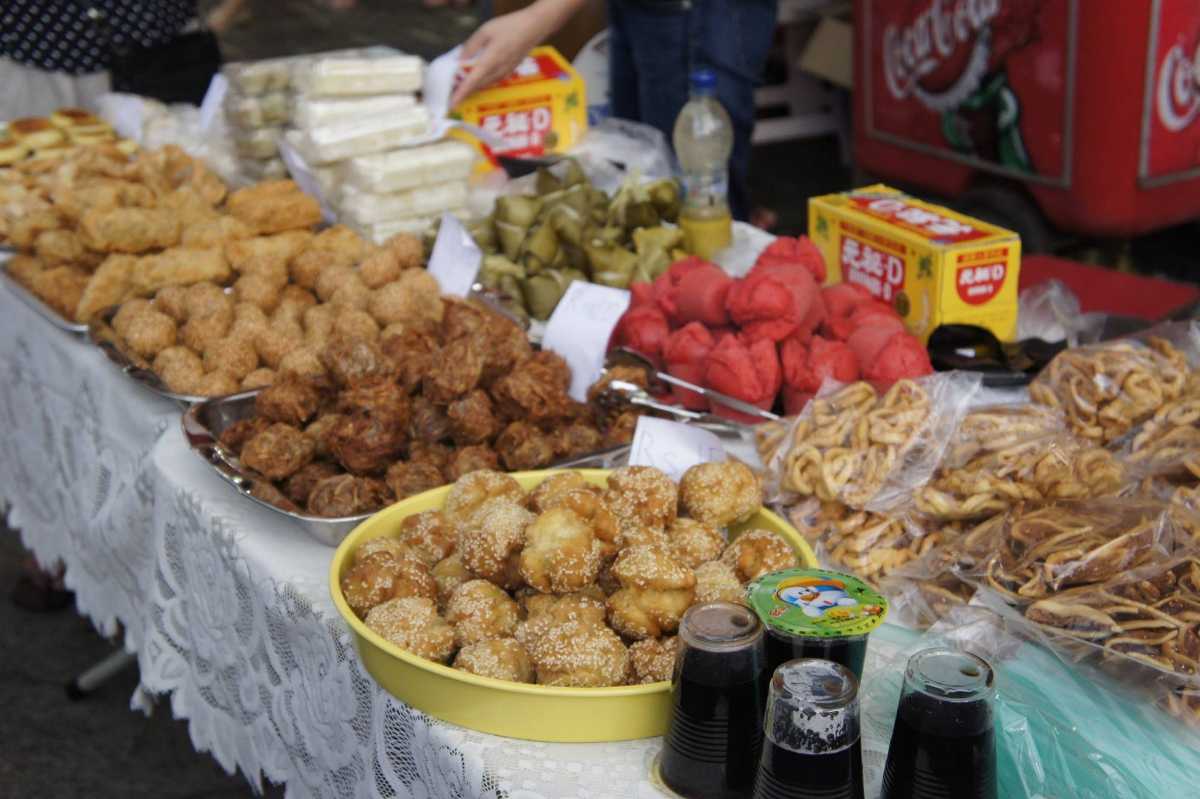
During the annual Chinatown Food and Cultural Festival The area morphs into a celebration ground, with the rhythmic drum beats and music in the background and a vibrant and colourful night sky with fireworks. The street turns into performing stages for artists – painters, dancers, musicians, acrobats, calligraphists. Food stalls offering Varieties of dishes brim with crowds. Shops are brightly decorated with gold, and red Chinese lanterns and shopkeepers display their best products for this night. Later in the night, the streets are closed for vehicles and are open for dance performances.

Tamarin is a small fishing village on the south-western coast of Mauritius.Tamarin Beach surrounded by salt pans, is close to 1.5 kilometres in length. Much of the beach is lost to the incoming waves at high tide. But a gap in Tamarin Beach’s coral reef allows large waves to reach its white sands. This gives the opportunity to the surfers.
Salt production dates back to the French period and the tradition of its making is almost unchanged after nearly two centuries. Water is pumped directly from the nearby sea and allowed to evaporate in the basins.
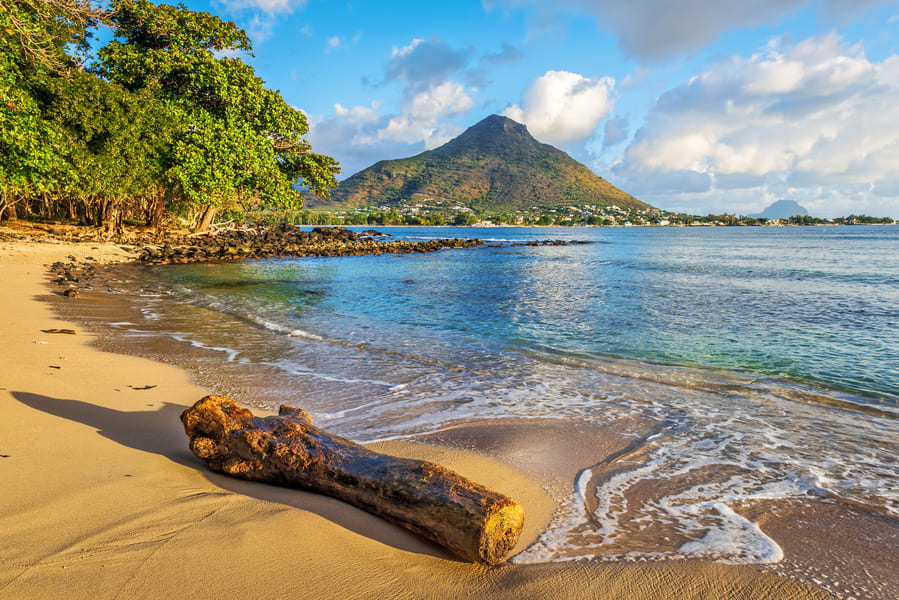
The beach does attract quite a lot of visitors at times and is also the starting point for the dolphin-spotting trips and angling adventures.
Tamarin Bay was discovered by a wider audience and immortalized after the release of the classic surf documentary “Forgotten Island of Santosha” by Larry and Roger Yates in 1974.
The ongoing development in Mauritius has made this village to become home to a new leisure and commercial area. The surfing area was previously known as Santosha Bay although the villages did not want to give a moniker because they didn’t want outsiders to discover their cache of surfable seas. Now the conditions have changed and the villagers are reaping the benefits of the development in tourism.
Tamarin village is located in the district of Black River and is about 50 km and one hour drive from the International Airport. The capital Port Louis, is about 30 km north of Tamarin and the drive takes around 1 hour. There are bus services between Tamarin and key locations in Mauritius. Visitors can use the public transport to save some money.
There are excellent boutique hotels and self-catering villas to aparthotels, B&Bs, holiday rentals and two to five-star hotels in Tamarin. There is accommodation to suit every budget.
Sands Suites Resort & Spa is a 4 star superior hotel offering five star luxury. From the hotel you get magnificent views of Tamarin Bay and Le Morne Mountain.
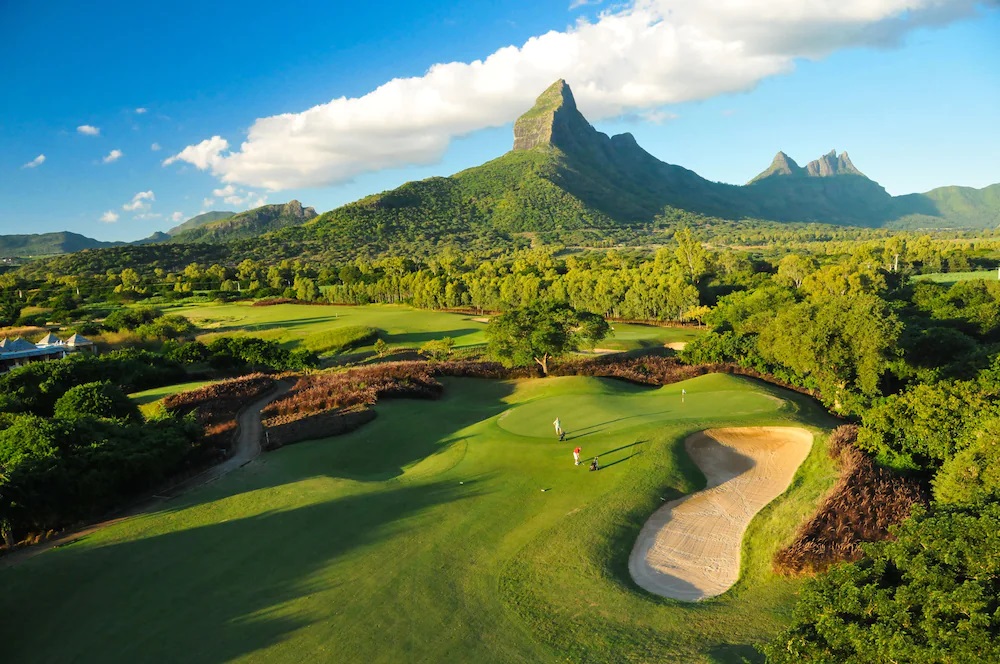
Tamarina Golf & Spa Boutique Hotel is a 4-star boutique hotel offers a selection of 50 garden-facing or sea-facing rooms, a choice of three different restaurants as well as bars and a wellness centre and also features an 18-hole golf course. Tamarina Golf Club is a 18-hole Championship Golf Course. This Par 72 challenging course undulates over 43 hectares of rugged savannah land framed with mature trees and crossed by the Rempart River. The holes have been designed to give great views.
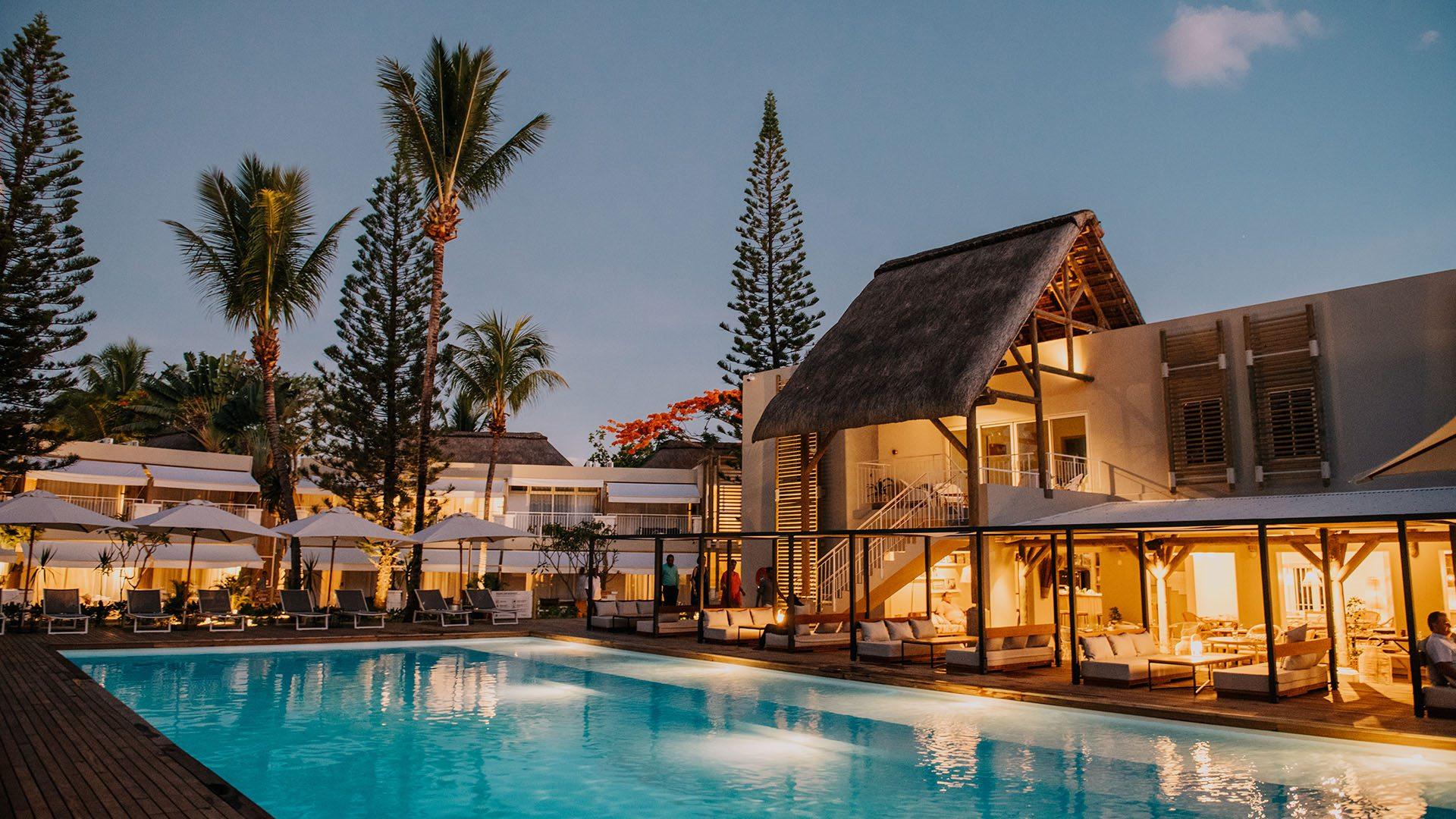
Veranda Tamarin Hotel and Spa is located in the mythical retro surf spot of Tamarin Bay.
There are many more hotels in the area.
Tamarin Bay is also known for the water sports such as surfing, bodyboarding, paddleboarding, kitesurfing, snorkeling and scuba diving, high sea fishing,catamaran cruise and dolphin or whale watching etc.
Cascavelle Shopping Village located in Flic-en Flac is a great destination for shopping.
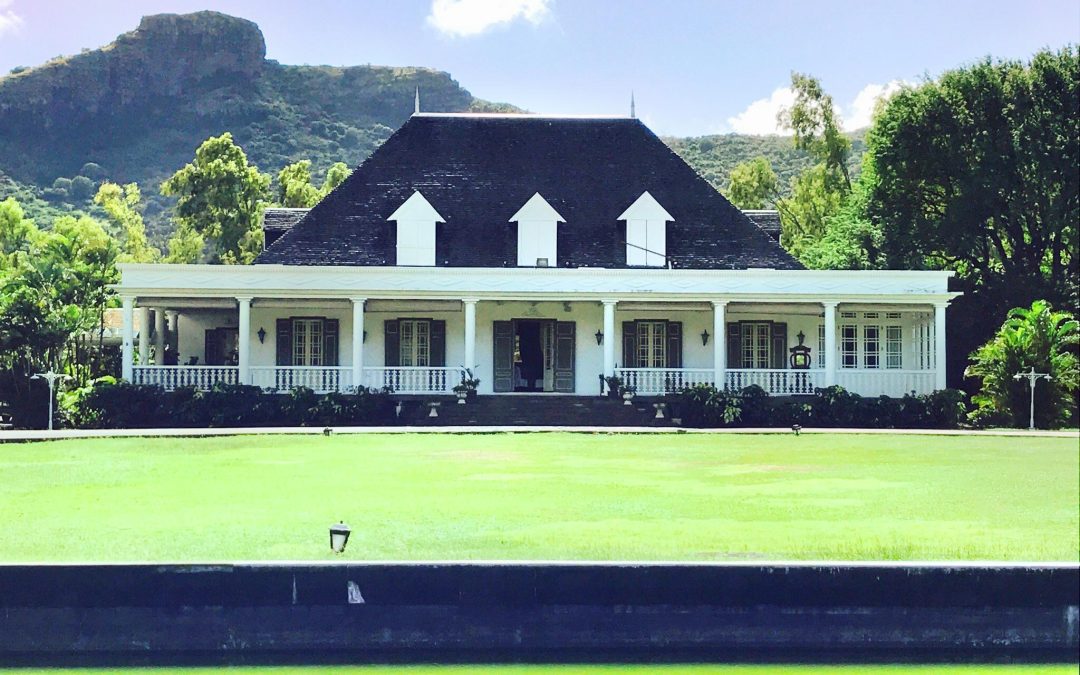
The Domaine Les Pailles is nestled in the heart of the valleys of the “Moka Range”. This is a place where you can experience the past history of Mauritius and also the cultural diversity and art. You can visit this place by train or a horse drawn carriage. The mini train, Lady Alice, has a capacity of 120 passengers and winds through the sugar cane plantations. The train ride takes about 15 minutes. The horse carriage takes a detour through the spice garden before setting off to discover the traditional architecture of the former Isle de France.
Among other things, Domaine les Pailles, boasts an old sugar mill dating from the 18th century, a traditional distillery, and even some old horse-drawn carriages. There are beach clubs with super cool bars, five fine restaurants and popular night clubs in Domaine les Pailles. Nightclubs are open mainly on Friday and Saturday nights with a few open on Wednesday nights as well for jam sessions. The restaurants offer authentic Indian, Mauritian, Chinese and Italian cuisine.

The resort hotels offer cool beach parties organised with international DJs spinning the decks, live music shows and spots for night lovers. These events are open to both the hotel residents and non-residents.
Le Grand Casino De Domaine Les Pailles has a VIP salon and several restaurants too. The minimum age required to enter the casinos is 18. Many casinos also offer complimentary alcohol too. There are 48 Jackpot slots, video machines with progressive games and many other live table games such as American Roulette, Blackjack, Oasis Stud Poker and a lot more.
The Domaine Les Pailles is nestled in the heart of the valleys of the “Moka Range”. This is a place where you can experience the past history of Mauritius and also the cultural diversity and art. You can visit this place by train or a horse drawn carriage. The mini train, Lady Alice, has a capacity of 120 passengers and winds through the sugar cane plantations. The train ride takes about 15 minutes. The horse carriage takes a detour through the spice garden before setting off to discover the traditional architecture of the former Isle de France.
Among other things, Domaine les Pailles, boasts an old sugar mill dating from the 18th century, a traditional distillery, and even some old horse-drawn carriages. There are beach clubs with super cool bars, five fine restaurants and popular night clubs in Domaine les Pailles. Nightclubs are open mainly on Friday and Saturday nights with a few open on Wednesday nights as well for jam sessions. The restaurants offer authentic Indian, Mauritian, Chinese and Italian cuisine.
The resort hotels offer cool beach parties organised with international DJs spinning the decks, live music shows and spots for night lovers. These events are open to both the hotel residents and non-residents.
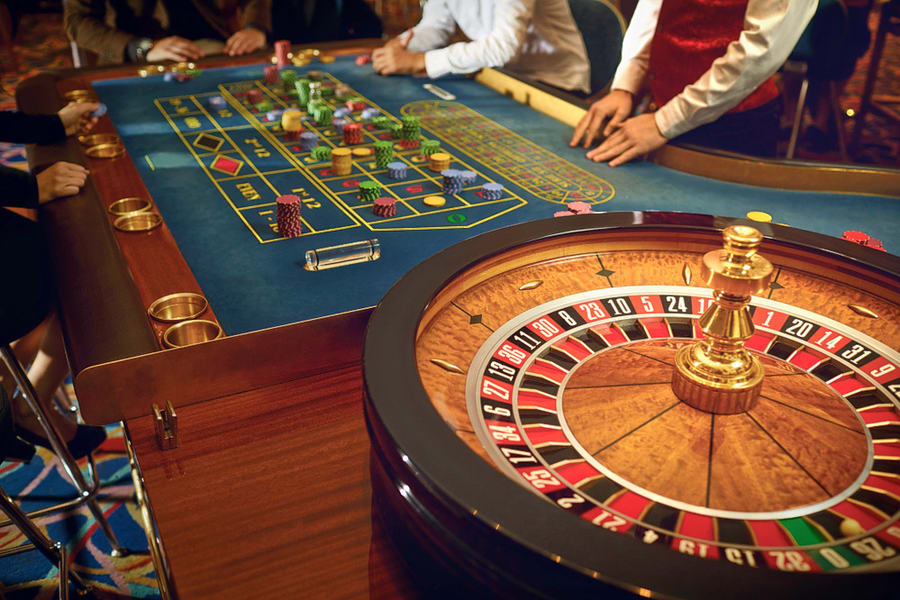
Chinese developer, Yihai, has taken over the stable and the club house. More than 25 horses, including five from the Mauritius Turf Club, are sheltered in the stable. The club house, located on the first floor of the stables, has also reopened since the Chinese group took over. Birthdays and theme parties are organized there. Equestrian centre provides lessons in dressage and show jumping, equestrian training and improvement. Children from 07 years old can take lessons or enjoy pony rides. Mountain rides with specialized horses are available, accompanied by qualified instructors.

The market is named after a famous village and also the largest district in Mauritius. This is the meeting point for inhabitants of East Mauritius. It is also the largest outdoor market in Mauritius. The market is open every day, but the best time to visit is during Wednesdays and Sundays when all the stalls are open and the place is swarming with people. You will see the cultural diversity of the nation with African, European, Indian and Chinese influences in this market.
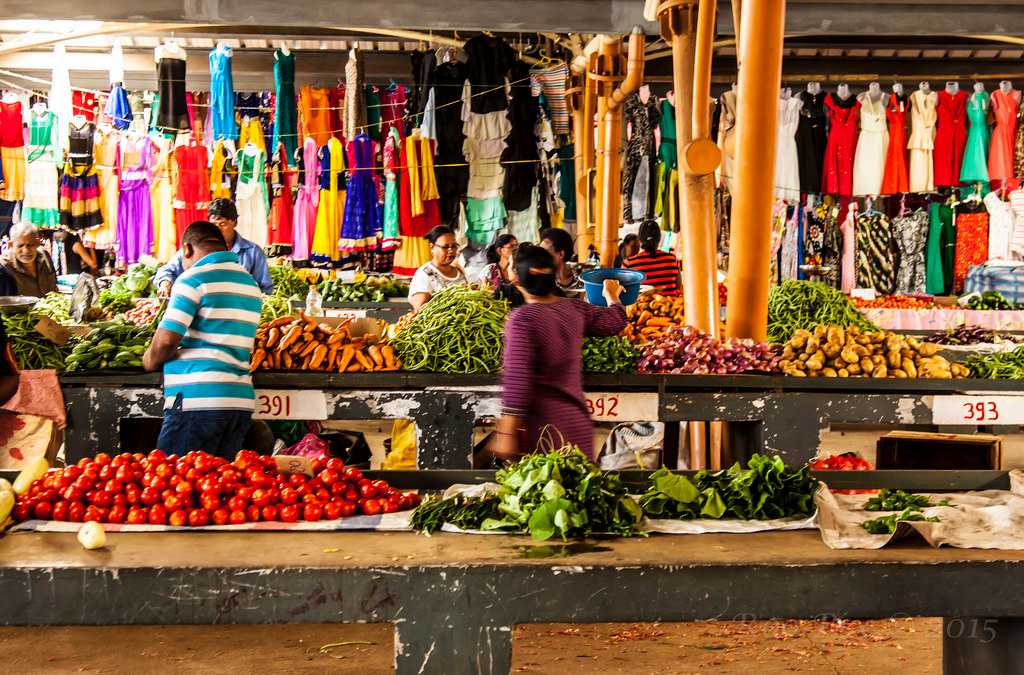
The word Flacq means flat in Dutch. The quality of the soil made Flacq an ideal choice for the Dutch to establish a garden and numerous important settlements including Trou d’Eau Douce which they named Cronenburg and in Grande Riviere Sud-Est.
The market is a one-stop shopping destination for many items such as locally produced vegetables and fruits, seafood, vanilla and herbal tea and also textile products. You can also buy souvenirs for yourself to take back home.
In the textile section where you will find fabrics of all colours and patterns as well as ready made garments. Colourful sarees, sparkling lehengas or comfy sweatpants are all available within meters of each other. There are a couple of stalls with several African themed tops and dresses hanging from the roof of the stalls.
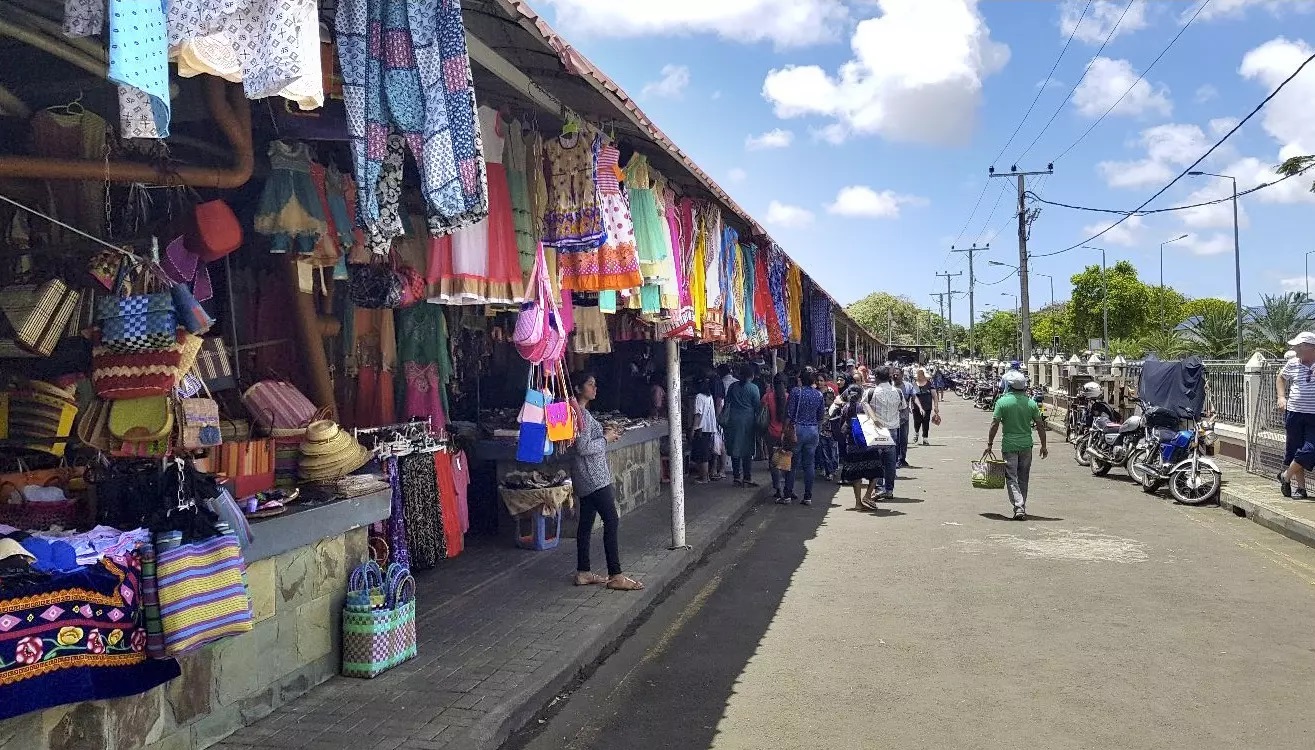
From street food vendors you can get fried snacks such as samosa, Taro Root fritters, and bhajiyas. Fresh coconut water is a popular drink in the market.
You may also hear snippets of the Bhojpuri language (of Indian origin) spoken across the market. In your visit to the market you will learn a lot about the culture of East Mauritius.

Quatre Bornes Market is in the busy town of Quatre Bornes. As the market is crowded with the locals you can experience the live Mauritian culture. The vegetable stalls will display items like watercress, lettuce, tomatoes, bananas and many other fruits and vegetables.
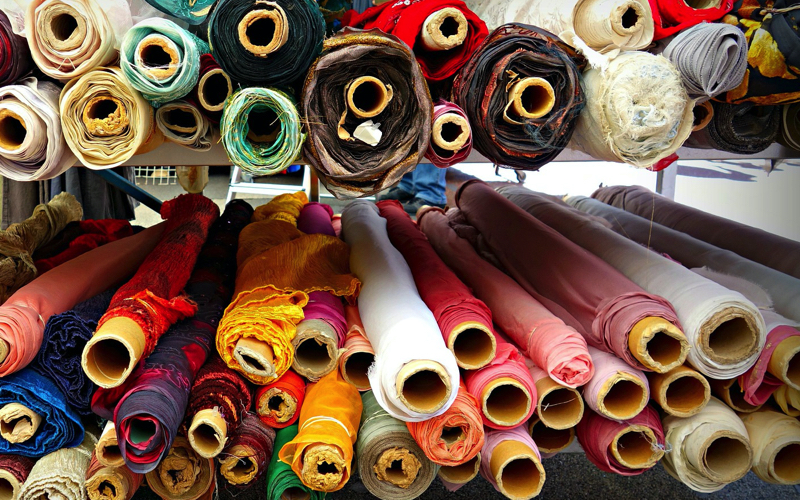
There will be stalls specialising in spices. You can stock up on some for your own kitchen. On Thursdays and Sundays, you will find the Haberdashery section of the market at its best. The textile market offers a wide variety of items such as underwear, sports wear or Indian dresses. You will also find fabric of various colours and materials on sale together with blankets, table cloths, shoes, bags and trinkets.
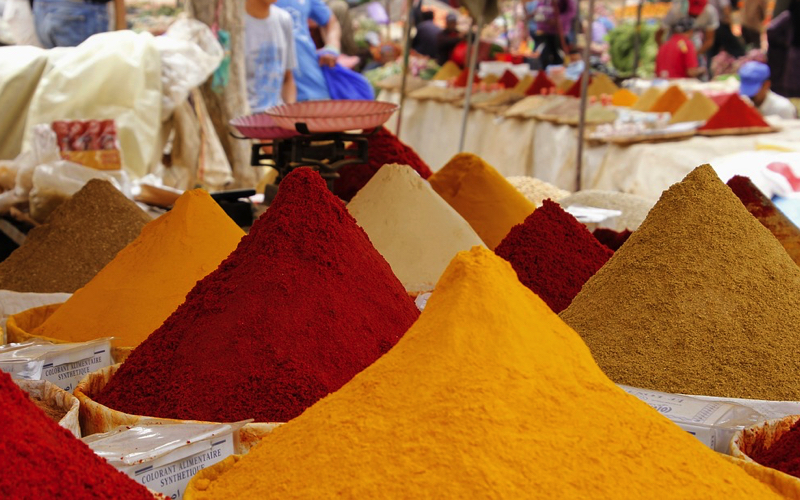
Locals love to bargain so it will be good fun for you to dabble in some bargaining.
From Monday to Saturday the Foodcourt is open and you have the delicious options to choose from snacks to meals. You can even watch the food being prepared.
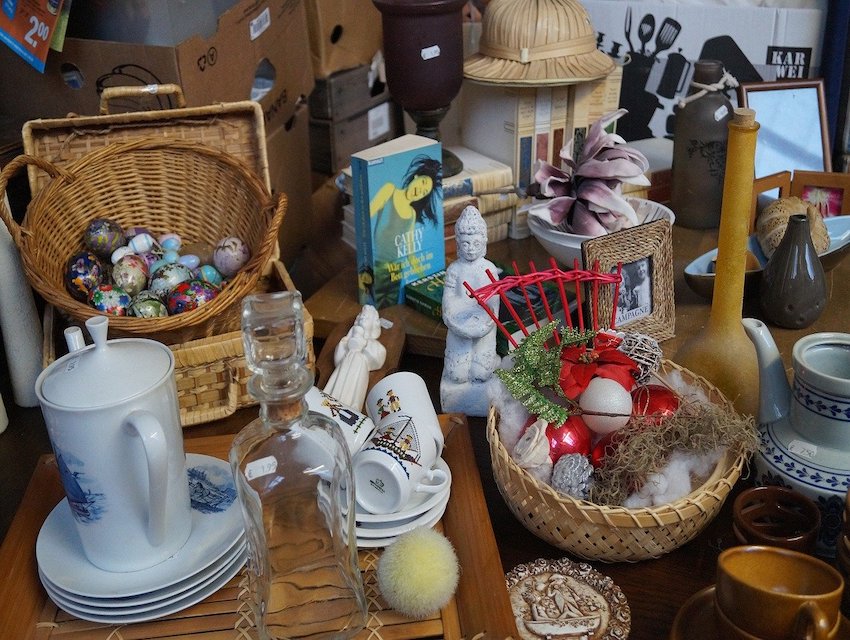
The Craft Market is located in Port Louis, the capital of Mauritius. The market is a two-storey building within the Caudan Waterfront complex. There are 36 stalls selling a wide variety of products ranging from exquisite woodwork to detailed baskets without forgetting beautiful glass souvenirs. There are also items made from seashells, boxes of ground spics, embroidered linen, handmade jewellery and the very famous African rag doll dressed with a typical sega outfit. You can pick any of these as a souvenir of your visit to Mauritius.
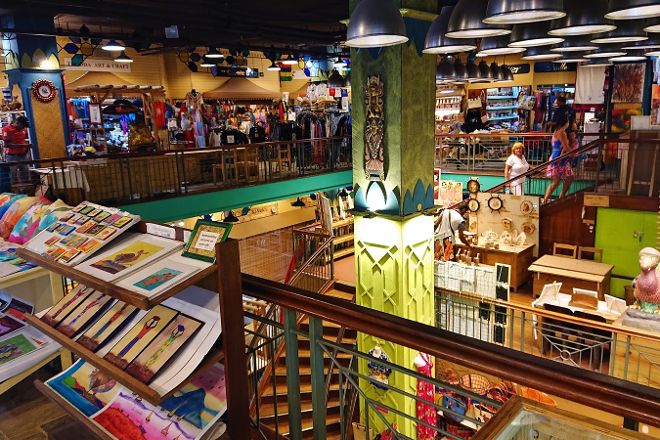
Many of the handicrafts are made by the stalls owners and their families. You will get the chance to meet the artists behind the paintings on sale or even witness your name being engraved on a wooden key chain.
The location of The Craft Market is definitely one of the best as well. Because of this you may find the goods sold a little pricey. You can bargain to get a little better price. While this is a convenient location, this is by no means the only place to get these items. There will be one or two handicraft shops in the normal markets also. These shops may not have a wide variety of the items.
You can also grab a quick lunch at the food court of Caudan Waterfront.
